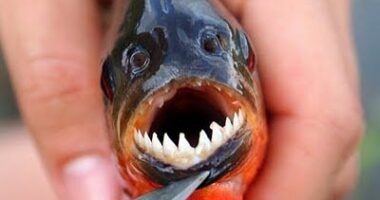Like humans, all animals are capable of independent thought and decision-making. Therefore, each animal on this list is intelligent and distinctive in its own way, even though some of them have brains that are smaller or significantly larger than our own. Here’s is a list of the top ten smartest animals.
1. Humans
Humans (Homo sapiens) are the most prevalent and common species of primate, distinguished by their bipedalism and large, complex brains. This made it possible for the advancement of culture, language, and tools. Humans are highly social beings who prefer to live in complex social structures made up of a variety of coexisting and competing groups, ranging from families and kinship networks to political states.
Social interactions between humans have established a wide variety of values, social norms, and rituals, which bolster human society. Curiosity and the human desire to understand and influence the environment and to explain and manipulate phenomena have motivated humanity’s development of science, philosophy, mythology, religion, and other fields of study.
2. Dolphin

A dolphin is an aquatic mammal within the infraorder Cetacea. There are 40 extant species named as dolphins. Dolphins range in size from the 1.7-metre-long (5 ft 7 in) and 50-kilogram (110-pound) Maui’s dolphin to the 9.5 m (31 ft 2 in) and 10-tonne (11-short-ton) orca.
Various species of dolphins exhibit sexual dimorphism where the males are larger than females. They have streamlined bodies and two limbs that are modified into flippers. Though not quite as flexible as seals, some dolphins can briefly travel at speeds of 29 kilometres (18 mi) per hour or leap about 30 feet (9.1 m).
Dolphins use their conical teeth to capture fast-moving prey. They have well-developed hearing which is adapted for both air and water. It is so well developed that some can survive even if they are blind. Some species are well adapted for diving to great depths. They have a layer of fat, or blubber, under the skin to keep warm in the cold water.
3. Chimpanzee
Chimpanzees are primates of the genus Pan, which includes the common chimp and the bonobo. They belong to the tribe Hominini, which also includes humans, and the family Hominidae, which includes all great apes. Chimpanzees, like their closest living relatives, modern humans, are social and intelligent animals with the ability to solve problems, use tools, and communicate with others of their kind without speaking.
4. Dog

The dog or domestic dog (Canis familiaris or Canis lupus familiaris) is a domesticated descendant of the wolf, and is characterized by an upturning tail. The dog is derived from an ancient, extinct wolf, and the modern wolf is the dog’s nearest living relative. The dog was the first species to be domesticated, by hunter–gatherers over 15,000 years ago, before the development of agriculture. Due to their long association with humans, dogs have expanded to a large number of domestic individuals and gained the ability to thrive on a starch-rich diet that would be inadequate for other canids.
The dog has been selectively bred over millennia for various behaviors, sensory capabilities, and physical attributes. Dog breeds vary widely in shape, size, and color. They perform many roles for humans, such as hunting, herding, pulling loads, protection, assisting police and the military, companionship, therapy, and aiding disabled people. Over the millennia, dogs became uniquely adapted to human behavior, and the human-canine bond has been a topic of frequent study. This influence on human society has given them the sobriquet of “man’s best friend”.
It is active all around the world, and is one of the most popular domestic pets as of 2022. They come in more than 350 breeds.
5. Cat

The cat (Felis catus) is a domestic species of small carnivorous mammal.
It is the only domesticated species in the family Felidae and is often referred to as the domestic cat to distinguish it from the wild members of the family. A cat can either be a house cat, a farm cat or a feral cat; the latter ranges freely and avoids human contact.
Domestic cats are valued by humans for companionship and their ability to kill rodents. About 60 cat breeds are recognized by various cat registries.
The cat is similar in anatomy to the other felid species: it has a strong flexible body, quick reflexes, sharp teeth and retractable claws adapted to killing small prey. Its night vision and sense of smell are well developed. Cat communication includes vocalizations like meowing, purring, trilling, hissing, growling and grunting as well as cat-specific body language. A predator that is most active at dawn and dusk (crepuscular), the cat is a solitary hunter but a social species. It can hear sounds too faint or too high in frequency for human ears, such as those made by mice and other small mammals. Cats also secrete and perceive pheromones.
6. Parrot
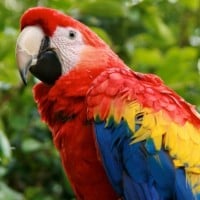
Parrots, also known as psittacines, are birds of the roughly 393 species in 92 genera that make up the order Psittaciformes, found in most tropical and subtropical regions
7. Monkey
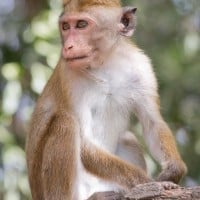
Monkeys are haplorhine primates, a paraphyletic group generally possessing tails and consisting of approximately 260 known living species.
8. Elephant
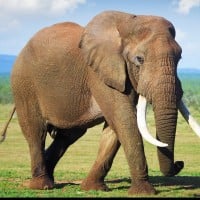
Elephants are the largest existing land animals. Three living species are currently recognised: the African bush elephant, the African forest elephant, and the Asian elephant. They are the only surviving members of the family Elephantidae and the order Proboscidea, extinct relatives include mammoths and mastodons. Distinctive features of elephants include a long proboscis called a trunk, tusks, large ear flaps, pillar-like legs, and tough but sensitive skin. The trunk is used for breathing, bringing food and water to the mouth, and grasping objects. Tusks, which are derived from the incisor teeth, serve both as weapons and as tools for moving objects and digging. The large ear flaps assist in maintaining a constant body temperature as well as in communication. African elephants have larger ears and concave backs, whereas Asian elephants have smaller ears, and convex or level backs.
Elephants are scattered throughout sub-Saharan Africa, South Asia, and Southeast Asia and are found in different habitats, including savannahs, forests, deserts, and marshes. They are herbivorous, and they stay near water when it is accessible. They are considered to be keystone species, due to their impact on their environments. Elephants have a fission–fusion society, in which multiple family groups come together to socialise. Females (cows) tend to live in family groups, which can consist of one female with her calves or several related females with offspring. The groups, which do not include bulls, are usually led by the oldest cow, known as the matriarch.
9. Octopus

An octopus (octopuses or octopodes, see below for variants) is a soft-bodied, eight-limbed mollusc of the order Octopoda. The order consists of some 300 species and is grouped within the class Cephalopoda with squids, cuttlefish, and nautiloids. Like other cephalopods, an octopus is bilaterally symmetric with two eyes and a beaked mouth at the center point of the eight limbs. The soft body can radically alter its shape, enabling octopuses to squeeze through small gaps. They trail their eight appendages behind them as they swim. The siphon is used both for respiration and for locomotion, by expelling a jet of water. Octopuses have a complex nervous system and excellent sight, and are among the most intelligent and behaviourally diverse of all invertebrates.
Octopuses inhabit various regions of the ocean, including coral reefs, pelagic waters, and the seabed; some live in the intertidal zone and others at abyssal depths. Most species grow quickly, mature early, and are short-lived. In most species, the male uses a specially adapted arm to deliver a bundle of sperm directly into the female’s mantle cavity, after which he becomes senescent and dies, while the female deposits fertilised eggs in a den and cares for them until they hatch, after which she also dies. Strategies to defend themselves against predators include the expulsion of ink, the use of camouflage and threat displays, the ability to jet quickly through the water and hide, and even deceit. All octopuses are venomous, but only the blue-ringed octopuses are known to be deadly to humans.
10. Pig
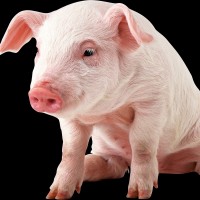
A pig is any of the animals in the genus Sus, within the Suidae family of even-toed ungulates. Pigs include the domestic pig and its ancestor, the common Eurasian wild boar, along with other species; related creatures outside the genus include the peccary, the babirusa, and the warthog.
RELATED: Top 5 Hardest Languages To Learn




